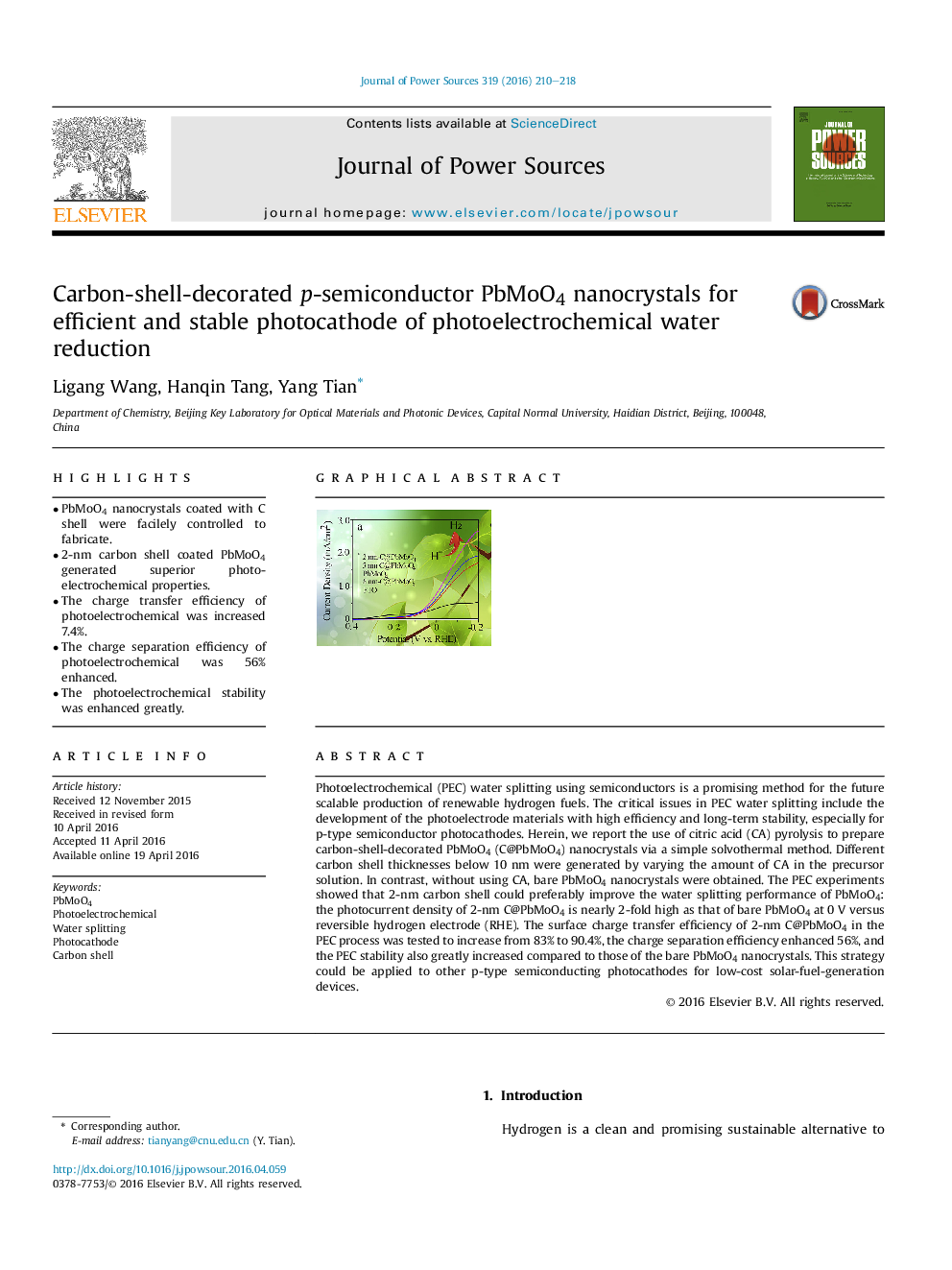| کد مقاله | کد نشریه | سال انتشار | مقاله انگلیسی | نسخه تمام متن |
|---|---|---|---|---|
| 1291995 | 1497913 | 2016 | 9 صفحه PDF | دانلود رایگان |

• PbMoO4 nanocrystals coated with C shell were facilely controlled to fabricate.
• 2-nm carbon shell coated PbMoO4 generated superior photoelectrochemical properties.
• The charge transfer efficiency of photoelectrochemical was increased 7.4%.
• The charge separation efficiency of photoelectrochemical was 56% enhanced.
• The photoelectrochemical stability was enhanced greatly.
Photoelectrochemical (PEC) water splitting using semiconductors is a promising method for the future scalable production of renewable hydrogen fuels. The critical issues in PEC water splitting include the development of the photoelectrode materials with high efficiency and long-term stability, especially for p-type semiconductor photocathodes. Herein, we report the use of citric acid (CA) pyrolysis to prepare carbon-shell-decorated PbMoO4 (C@PbMoO4) nanocrystals via a simple solvothermal method. Different carbon shell thicknesses below 10 nm were generated by varying the amount of CA in the precursor solution. In contrast, without using CA, bare PbMoO4 nanocrystals were obtained. The PEC experiments showed that 2-nm carbon shell could preferably improve the water splitting performance of PbMoO4: the photocurrent density of 2-nm C@PbMoO4 is nearly 2-fold high as that of bare PbMoO4 at 0 V versus reversible hydrogen electrode (RHE). The surface charge transfer efficiency of 2-nm C@PbMoO4 in the PEC process was tested to increase from 83% to 90.4%, the charge separation efficiency enhanced 56%, and the PEC stability also greatly increased compared to those of the bare PbMoO4 nanocrystals. This strategy could be applied to other p-type semiconducting photocathodes for low-cost solar-fuel-generation devices.
Figure optionsDownload as PowerPoint slide
Journal: Journal of Power Sources - Volume 319, 1 July 2016, Pages 210–218